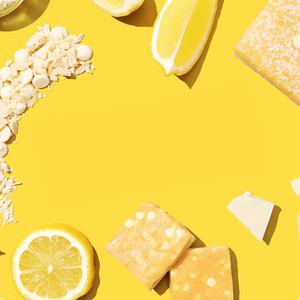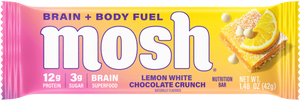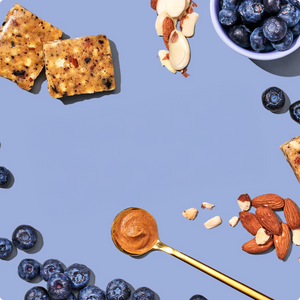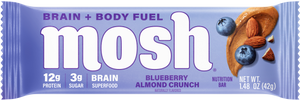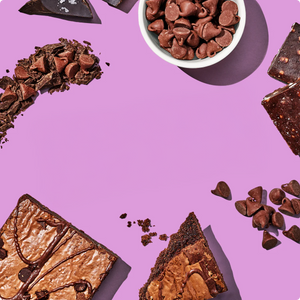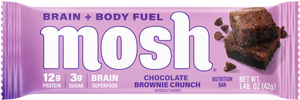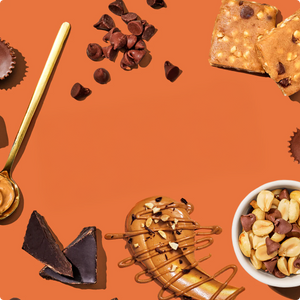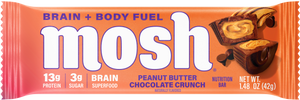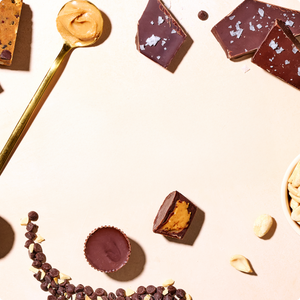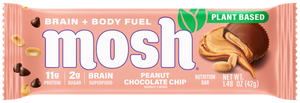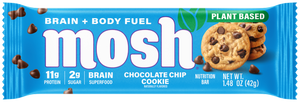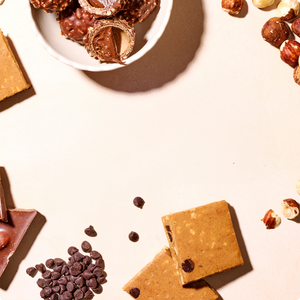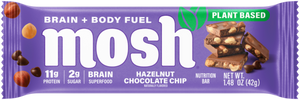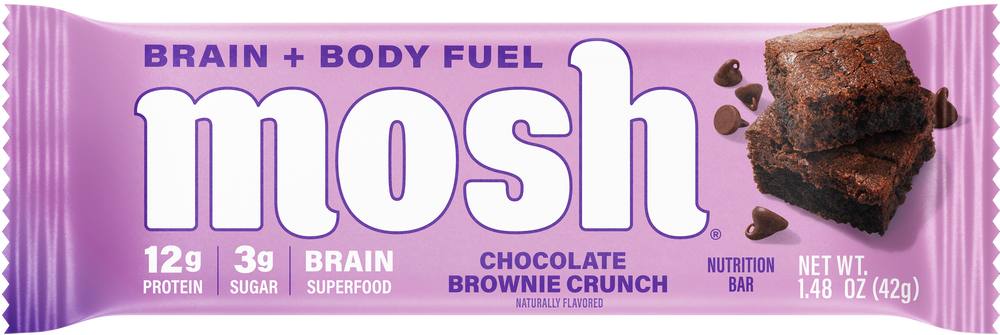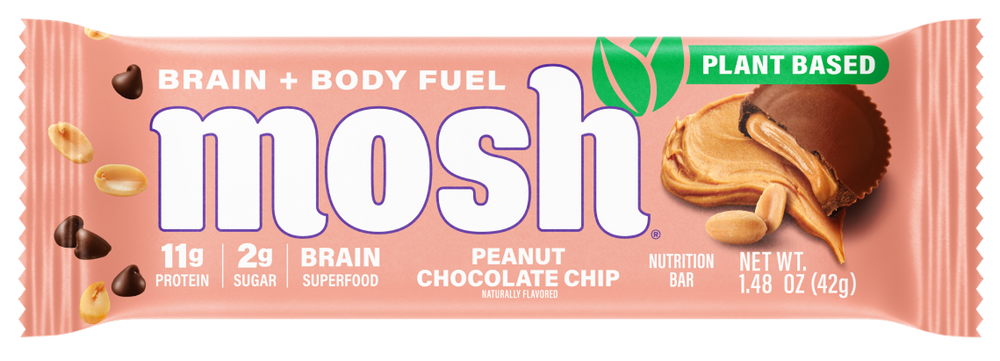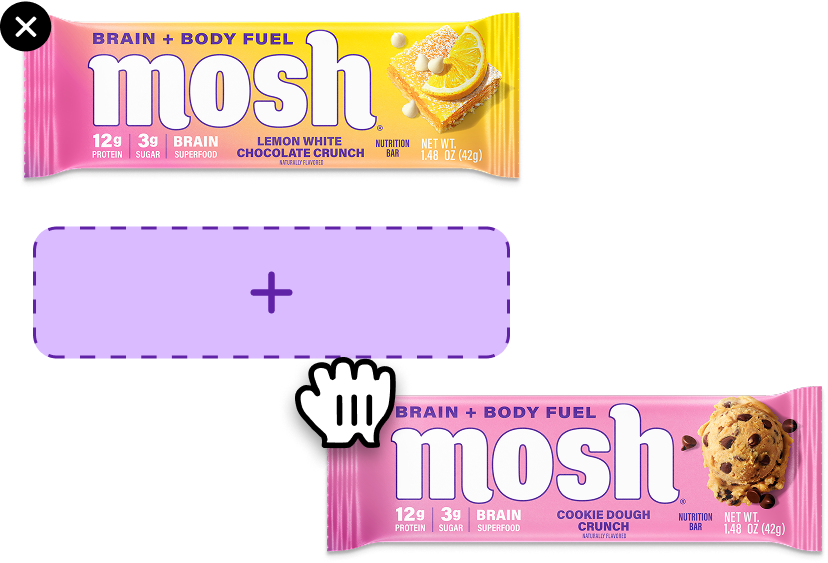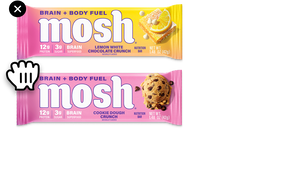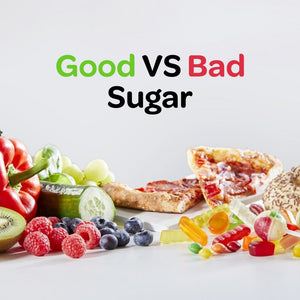Sugar is often the first ingredient most all physicians, dietitians, and nutritionists say to avoid. And for good reason, it’s toxic and addictive. Over consumption of sugar is one of the leading causes of the American health crises whereby obesity, type II diabetes, and diet related disease account for 85% of health care related spending. It might be sweet but it’s far from innocent, in fact, many leading experts believe it to be a significant factor leading to early stage cognitive decline and Alzheimer’s related dementia.
It’s about time we stop heeding such advice with a grain a salt and start trusting the science. Breaking up with sugar might be hard to do, especially cold-turkey. However, a more practical and sustainable approach should balance limiting the amount, occasions and types of sugar we reach for when are sweet tooth comes calling.
So, what does that even mean? Let’s talk sugar so moving forward you feel empowered to make better choices and stay in control of your health and wellness goals.
What Does Sugar Do For Our Health?
Our body requires sugar to carry out basic day-to-day functions, particularly when it comes to metabolism and serves as the preferred fuel source for cellular energy. It’s a simple low-cost energy source our body can tap and produce.
Sugar is a type of carbohydrate, along with starch and fiber. Carbohydrates, fat, and protein are essential macronutrients our body uses to maintain homeostasis, and different everyday functions like run, think, build muscle.
Carbohydrates, in particular, provide energy for all of the cellular and chemical reactions that take place throughout the whole body. Sugar, starch, and fiber are considered either simple or complex carbohydrates based on the number of sugar molecules they have (more on that later).
Whenever you consume foods that contain carbohydrates, your body breaks them down into the most usable type of simple sugar, glucose, which absorbs into your bloodstream, hence the term “blood sugar.”
The presence of glucose in your blood alerts the pancreas to release a hormone called insulin. This hormone helps regulate the amount of glucose in your blood and transports it to the cells where it’s needed most. The brain, central nervous system, and red blood cells use glucose as their primary energy source.
The inability to maintain sufficient glucose levels in the blood is a medical condition known as hypoglycemia. This condition is a common complication that accompanies diabetes and can lead to severe consequences. People with hypoglycemia often experience a loss of energy, reduced brain function, numbness, drowsiness, and much worse.
The good news about the most critical fuel for our cells is that it’s almost impossible to not get enough of it. Hypoglycemia is commonly associated with certain types of diabetes and long periods of starvation, but it’s fairly rare otherwise.
The bad news is that it’s actually too easy to overdo your sugar intake and elevate your blood glucose, especially with the rising prevalence of bad sugars in our most prominently accessible forms of food and drink here in the U.S.
What Are the Different Types of Sugar?
Before discussing the negative side effects of too much sugar, it’s important to understand the various types of sugar.
Chances are that you think of white or brown granulated crystals or table sugar whenever you hear the word “sugar.”
This type of sugar, known as sucrose, is typically derived from sugar cane and sugar beets, but can technically come from any plant source. It’s typically the most commonly known form of sugar, but it’s far from the only type.
There are many different naturally occurring sugars. Virtually all plants have some type of sugar in their chemical composition.
However, the average person typically only encounters about six of them regularly:
-
Fructose exists naturally in fruits, fruit juices, some vegetables, and honey.
-
Galactose is naturally found in dairy products and some fruits, vegetables, and honey.
-
Glucose is naturally in whole foods with a lot of carbohydrates, such as bread, potatoes, fruit, and honey.
-
Lactose is naturally in milk and other dairy products.
-
Maltose is naturally in grains such as wheat, barley, and cornmeal.
-
Sucrose is naturally in sugarcane, sugar beets, and some fruits and vegetables.
As mentioned earlier, carbohydrates are simple or complex. Each simple sugar type is a combination of one or two molecules. On the other hand, starches and fiber are complex (aka polysaccharides) as they are typically composed of hundreds of sugar molecules.
For sugar, there are two different subtypes:
-
Monosaccharides are composed of a single sugar molecule. Glucose, fructose, and galactose are all considered monosaccharides. It’s easiest to think of them as the primary colors of sugar types used to create other types.
- Disaccharides are composed of two sugar molecules. These sugar types are secondary colors as they’re created by combining two monosaccharides. The table sugar we mentioned earlier, for example, is a combination of glucose and fructose. Lactose is the combination of glucose and galactose. Maltose is the combination of two glucose molecules.
The last thing worth mentioning about sugar is that it also comes in various forms. Most people think of sugar in its granulated form. However, there are several different sugar preparations:
-
Granulated. The most common type of sugar, and can be used for several purposes. Granulated sugar is highly refined, typically from sugarcane and sugar beets.
-
Caster. A type of granulated sugar that’s super fine and dissolved very quickly in liquids. It's the most common way to make sweetened syrups and flavored cocktails.
-
Powdered. Granulated sugar ground into a fine powder is called powdered sugar. Cornstarch prevents clumping, and it dissolves quickly in liquid. Powdered sugar commonly makes icing or decoration for baked desserts.
-
Preserving. Preserving sugar is very coarse granulated sugar, much bigger than regular granulated sugar. It gets its name by being a common way to preserve jams.
- Brown. This type of sugar is essentially just refined sugar with molasses added to it. There can be light or dark brown sugars depending on how much molasses it contains.
What Happens If You Consume Too Much Sugar?
Sugar is essential to the metabolism of cellular energy, but too much of it can cause severe issues to physical and emotional health.
One of the most well-known side effects of consistently elevated blood sugar is insulin resistance, where the body becomes resistant to insulin’s efforts to move sugar from the bloodstream and into cells to be used as energy. If left untreated, insulin resistance could eventually result in type 2 diabetes.
Along with diabetes, these are a few other ways that consuming excessive amounts of sugar can affect various parts of your body:
The Brain
Eating sugar gives your brain a surplus of dopamine. The “feel good” chemical is commonly associated with pleasure and is one of the reasons why chocolate and sweets are aphrodisiacs.
Over time, though, elevated glucose levels in the brain can start to damage the blood vessels in the brain, affecting the ability for oxygen-rich blood to make it to where it needs to go.
If left untreated, the damage can become severe enough that you develop small vessel disease. This condition reduces the overall amount of blood that flows into your brain. As a result, you might experience cognitive difficulties and an increased risk of vascular dementia.
The Teeth
Children with baby teeth can tell you firsthand that sugar causes cavities. Your teeth are one of the first parts of your body that interacts with sugar.
Whenever you consume sugar, the natural bacteria in your mouth will release acid to help break it down. The acid can start to eat away at the surface of your teeth and contribute to tooth decay and cavities over time, even with good oral hygiene practices.
The Liver
Your liver helps to metabolize the extra carbohydrates in your food and convert them into fatty acids. Because of this, eating more sugar than what’s needed will naturally lead to a higher buildup of fat in your liver and body.
After a certain point, the buildup can become classified as non-alcoholic fatty liver disease and nonalcoholic steatohepatitis. Excessive fat can act as a toxin to your liver cells and result in severe liver inflammation and scarring (cirrhosis). These factors elevate the risk of developing liver cancer.
The Joints
As mentioned above, sugar stimulates the production of fatty acids within the liver. Eventually, the body will attempt to digest these fatty acids.
The compounds required to digest them can often trigger an inflammatory response. Inflammation can result in pain, stiffness, and swelling in your joints.
The Skin
The same inflammatory response that can cause issues in your joints can also affect your skin.
Collagen and elastin are protein fibers that help to keep your skin taut and healthy. Chronic inflammation is one of the most damaging things for these proteins. You can wind up with dull, saggy skin and develop wrinkles faster than what the normal aging process would dictate.
The Pancreas
As covered earlier, insulin is a hormone that helps regulate the glucose in your blood. The pancreas is responsible for producing and releasing this hormone. As the amount of sugar in your blood increases, insulin production must also increase.
Eventually, the pancreas won’t be able to keep up and can give out. There won’t be anywhere near enough insulin in your blood, and your glucose levels will skyrocket. Elevated blood sugar levels are one of the major contributors to type 2 diabetes and cardiovascular disease.
The Heart
Insulin is an essential hormone for controlling your blood sugar levels but it can damage your blood vessels. The arterial walls can easily get damaged by excessive insulin, growing thicker and becoming more rigid.
This can cause your heart to increase its workload because it has to pump much harder to get blood where it’s needed. Elevated blood pressure, obesity, and heart strain can contribute to cardiovascular disease like heart attack and stroke.
What Is “Good” Sugar?
It’s practically impossible to eliminate sugar from your diet altogether, nor should you try for a completely sugar-free diet.
The best strategy for a healthier approach to sugar is to focus on foods with “good” sugar as part of an overall healthy diet, and to avoid “bad” sugars (which we’ll touch on in just a bit).
“Good” sugar refers to foods that only feature naturally-derived sugars in their naturally occurring amounts. Fruits, vegetables, beans, dairy, nuts, and whole grains contain these good sugars in their natural, whole, unprocessed form, which is easier for the human body to process and metabolize.
The whole food sources of these simple sugars are also more likely to contain the various vitamins, minerals, antioxidants, and other nutrients essential for your overall health.
But arguably the most important nutrient that’s commonly packaged with natural sugar is fiber. Fiber is considered a carbohydrate, just like sugar. However, it plays an essential role in how your body processes sugar.
Your body cannot break down and absorb fiber. While that might sound like a bad thing, it provides two distinct health benefits for managing your glucose levels and supporting your overall digestive and metabolic health:
- It slows down the digestion process, which prevents a spike in your blood sugar levels. The pancreas will have more time to produce insulin and won’t be as overworked the way it might be when you eat refined, processed sugars that can signal insulin production into overtime.
- It will help you feel fuller for longer, and can help sustain energy levels longer through the day. You’ll be less inclined to overeat as your body will still be digesting the fibrous foods you ate earlier, and you may be able to avoid the cravings that can come from fast-metabolizing simple carbs.
What Is “Bad” Sugar?
As “good” sugar generally refers to naturally occurring sugars in their whole, unprocessed form, “bad” sugar refers to processed, refined, or even synthetically produced sugar that can have negative impacts on health primarily because these types of sugars are commonly added to many processed, packaged foods to improve the taste, help provide preservative effects to increase shelf-life and reduce cost, or give baked goods their texture, flavor, and even their color.
These sugars come from natural sources like good sugars do, but when they are heavily refined and processed, your body doesn’t quite use them the same, and it’s not common for them to be part of a holistically healthy recipe:
- High fructose corn syrup
- Corn syrup
- Cane sugar
- Coconut syrup
- Molasses
- Maple syrup
- Agave nectar
- Malt
- Fruit juice concentrate
Another significant problem with these added sugars is that they are essentially stripped of nutritional value. The liver can struggle with processing them properly, so your body will typically digest them more quickly than sugars in their natural form.
As a result, your blood sugar levels may suddenly spike, with the rapid increase putting your pancreas at risk of struggling to maintain the required insulin production necessary to manage blood glucose.
Another downside is that liquified sugar, such as the high fructose corn syrup found in soft drinks, sports drinks, energy drinks, and flavored dairy products, is one of the worst things for satiating your hunger. You’ll get your spike, then continue to experience hunger signals even if you drank enough calories to theroretically last you for an entire day.
Are Artificial Sweeteners Good or Bad?
Artificial sweeteners have been a hotly debated topic since they first arrived on the scene. The idea was to use something that could be used as a sugar substitute but didn’t result in negative side effects.
Aspartame, saccharin, acesulfame, sucralose, neotame, and advantame are all commonly found in various artificial sweeteners. These examples are classified as “synthetic” by the FDA as they’re made in a lab and don’t contain any of the nutritional benefits of natural sugar.
On the other hand, Stevia is classified as a “natural” sugar substitute as it comes from the Stevia rebaudiana plant native to parts of South America. These plants contain sugars 50 to 300 times sweeter than sugar, but don’t contain carbohydrates, and have no calories.
The research is far from conclusive, but it doesn’t seem like artificial sweeteners and sugar substitutes are the answers people really want. Studies suggest that artificial sweeteners are not healthy for you and might be even worse than “bad” sugars. Artificial sweeteners have been found to inflate sugar cravings, stimulate appetite, and increase the odds of developing diabetes.
How Much Sugar Should You Eat in a Day?
Getting enough sugar in your daily diet isn’t very hard. You should easily get enough sugar by meeting your daily recommended value of fruit and vegetables.
The problem is that it’s very easy to get too much sugar. As mentioned earlier, you need sugar to fuel your body to function properly. However, a little sugar will go a long way toward achieving this goal.
The key thing to focus on is limiting the amount of “bad” sugars consumed daily. The American Heart Association suggests that women should limit added sugar to six teaspoons (24 grams) daily, and men should limit it to nine teaspoons (36 grams).
These amounts roughly translate to 100 calories’ worth of added sugar for women and 150 for men. The highest acceptable added sugar peak is 10% of your daily calories. However, that should only be reached occasionally and not habitually.
Cutting back on sugar can be very challenging at first. You’ll be cutting out many different foods you probably eat very often. The good news is that your taste buds will change over time, and you’ll develop a sharper sense of sweetness.
Eventually, even something as simple as an apple can satisfy your sweet tooth if you’ve sufficiently cut back on your added sugars.
How Do You Know If Food Has Added Sugar in It?
The problem with reducing added sugar is that it’s in many different foods, especially here in the United States.
The average adult man in America consumes roughly 17 teaspoons (or 71 grams) of added sugar each day. That’s almost twice the recommended dosage and equates to roughly 270 calories in sugar alone.
It’s not hard when the average can of soda already contains all of the added sugar you should be consuming through your whole day.
There are plenty of obvious examples of “bad” sugar that you should be able to recognize pretty quickly. Desserts and candy will naturally have an excess of sugar you’ll need to avoid. However, there are lots of foods that have added sugar that you might not suspect.
Here is a list of common foods and drinks that generally contain an elevated amount of added sugar:
- Baby food
- Barbeque sauce
- Bread
- Cake
- Candy
- Cereal
- Cookies
- Doughnuts
- Dried, canned, or frozen fruit
- Energy drinks
- Flavored yogurt
- Fruit drinks
- Granola
- Ice cream
- Iced tea
- Instant oatmeal
- Ketchup
- Pasta sauce
- Pies
- Premade soup
- Processed frozen food
- Processed meat
- Relish
- Salad dressings
- Soft drinks
- Sports drinks
- Teriyaki sauce
The easiest way to cut back on your added sugar intake is to review the nutritional food label of everything you eat. Even if you’re pretty sure that something doesn’t include added sugar, you might be surprised. It’s worth double-checking so that you can keep your blood sugar levels under control.
Embrace “Good” Sugar and Avoid “Bad” Sugar
Sugar is an essential part of your diet in various forms. Eliminating sugar from your diet isn’t just extremely difficult; it can be extremely dangerous too. The goal should be to eliminate the “bad” sugar from your diet.
Practically all fruits and vegetables contain sugars that are very good for you. Your body can use the simple sugars in these foods to properly and efficiently fuel itself. The thing to avoid is the “bad” sugars that are added to your food.
Finding foods that don’t have excess sugar can take some time. Be sure to check every label twice before you consume what’s inside. It might take a little while for your taste buds to adjust, but the health benefits will be worth the sacrifice. An overly sugary snack today isn’t worth the potential consequences tomorrow.
And to settle your worries about your favorite midday snack, MOSH bars contain 0 g of added sugars, and always will. Our not-too-sweet, brain-fueling protein bars contain up to 1 g of natural sugars, with that perfect hint of sweetness coming from allulose, a natural sweetener derived from fruits like figs and raisins.
Ready to either restock or try MOSH bars for yourself? Order the MOSH bar trial pack here.
Looking to learn more about what foods and daily practices can help support your wellness? Explore our wellness blog, The MOSH Pit, here.
Sources:
How to Understand and Use the Nutrition Facts Label | FDA
How Much Is Too Much? | University of California San Francisco
Added Sugar | The Nutrition Source | Harvard School of Public Health
Artificial Sweeteners and Other Sugar Substitutes | Mayo Clinic
Stevia as a Natural Sweetener: A Review | PUBMED
How Sugar and Fat Trick the Brain into Wanting More Food | Scientific American
Are Unhealthy Sugars Hiding in Your Favorite Foods? | University of Michigan
Rough Up Your Diet | News in Health
Vascular Complications of Diabetes: Mechanisms of Injury and Protective Factors | PMC
The Power of Your Pancreas | News in Health
Inflammaging in Skin and Other Tissues - The Roles of Complement System and Macrophage | PMC
Fatty Liver Disease: Risk Factors, Symptoms, Types & Prevention | Cleveland Clinic
Sugars and Tooth Decay | Action on Sugar
Daily Bingeing on Sugar Repeatedly Releases Dopamine in the Accumbens Shell | PUBMED
Disaccharide | ScienceDirect Topics
Monosaccharides | ScienceDirect Topics
Polysaccharides | ScienceDirect Topics
Types of Sugar | HowStuffWorks
Blood Sugar | Blood Glucose | Diabetes | MedlinePlus




